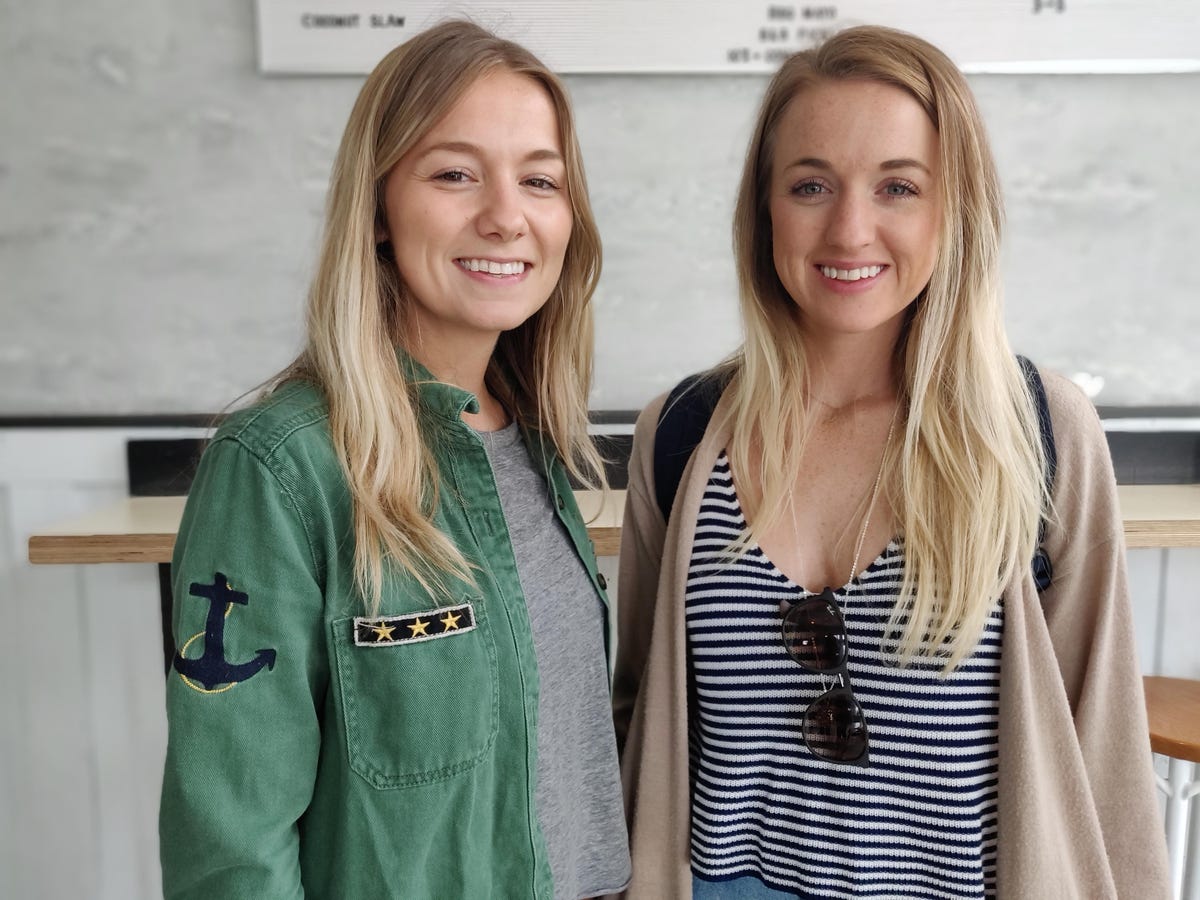
OnePlus murals
Colors on the OnePlus can look less vibrant than the iPhone, and because the lens is slightly wider, there is a touch more distortion.
iPhone X mural
The same photo on the iPhone.
iPhone X portrait
The iPhone X uses its second telephoto lens (56mm equivalent) for portraits, so you have to get closer to your subjects to achieve the effect.
OnePlus 6 portrait
The OnePlus 6 uses its second 20-megapixel camera purely for portraits, but the lens is much wider than the iPhone's.
OnePlus 6 landscape
A landscape photo from the OnePlus. Compared to the iPhone X photo (see next slide), the exposure looks a little more dull.
iPhone X landscape
The same photo taken on the iPhone X.
OnePlus 6 portrait mode
Another portrait from the OnePlus 6, which shows how wide you can make your portraits while still achieving a dramatic blurred background effect.
iPhone X portrait with the same wide framing
In this portrait we took several steps back to get the same framing as the OnePlus to see what the effect looks like on the iPhone. It might be tricky to see at a reduced resolution, but the iPhone portrait doesn't quite manage to achieve a natural blur on the hair.
OnePlus 6 colors
Colors from the OnePlus 6 generally look a little more true to life than those from the iPhone in certain situations. In this photo, the blue car looks more like it did in the real world than it does from the iPhone (see next slide).
iPhone X colors
By contrast, the iPhone X has more saturated colors, especially with the blue car and the red door. Some people may prefer this look compared to the results from the OnePlus straight out of camera.
OnePlus 6 portrait
The OnePlus produces a striking background blur in this photo, despite the relative shallow distance between him and the foliage.
iPhone X portrait
The iPhone image doesn't look as pleasing, with less of the blur effect and slight overexposure on the face.
iPhone X portrait on food
Neither phone gets the blur from portrait mode right 100 percent of the time, but in this example the iPhone X completely blurs out the top of the bottle.
OnePlus 6 portrait of food
The OnePlus does a better job with determining what to blur and what not to blur in this still life.
iPhone portrait selfie
Portrait mode on the front-facing camera on the iPhone X doesn't always get it right ... in this instance, blurring out Vanessa.
OnePlus 6 selfie
Portrait mode on the OnePlus doesn't blur out our faces, but isn't super accurate when it comes to blurring the hair.
OnePlus 6 selfie camera
Selfies on the OnePlus are wider than those from the iPhone and don't flip the image (so it is like a mirror image).
iPhone X selfie
Color temperature on the front camera is a bit warmer overall, but the field of view is more narrow.
iPhone X 2x zoom
The iPhone uses its second telephoto lens not only for portraits, but for optical zoom.
OnePlus 6 2x zoom
On the other hand, the OnePlus uses digital zoom to get closer to subjects. At 100 percent magnification you can tell the difference when looking at the labels on the wine bottles, as details are much sharper on the iPhone.
OnePlus 6 group portrait
Background blur from the OnePlus 6 gives a dramatic look to portraits, even with multiple people in the frame.
iPhone X group portrait
The iPhone X portrait has a less dramatic blur than the OnePlus.
iPhone lowlight photo
In low light, separating the iPhone from the OnePlus is tricky. Both phones produce sharp photos.
OnePlus 6 low light
It's hard to pick a clear winner here as both phones do a great job.
OnePlus 6 in low light
Another low light photo from the OnePlus.
iPhone X low light
The same photo from the iPhone X.
iPhone low light
Another low light photo from the iPhone X.
OnePlus 6 low light
The same photo from the OnePlus.



